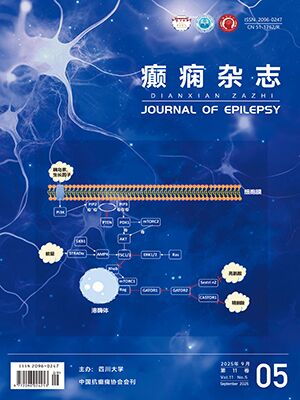| 1. |
Pallud J, McKhann GM. Diffuse low-grade glioma-related epilepsy. Neurosurg Clin N Am, 2019, 30(1): 43-54.
|
| 2. |
Kemerdere R, Yuksel O, Kacira T, et al. Low-grade temporal gliomas: surgical strategy and long-term seizure outcome. Clin Neurol Neurosurg, 2014, 126: 196-200.
|
| 3. |
Lombardi D, Marsh R, Tribolet N. Low grade glioma in intractable epilepsy: lesionectomy versus epilepsy surgery. Acta Neurochir Suppl, 1997, 68: 70-74.
|
| 4. |
Brown MT, Boop FA. Epilepsy surgery for pediatric low-grade gliomas of the cerebral hemispheres: neurosurgical considerations and outcomes. Childs Nerv Syst, 2016, 32(10): 1923-1930.
|
| 5. |
Beaumont A, Whittle IR. The pathogenesis of tumour associated epilepsy. Acta Neurochir(Wien), 2000, 142(1): 1-15.
|
| 6. |
Slegers RJ, Blumcke I. Low-grade developmental and epilepsy associated brain tumors: a critical update 2020. Acta Neuropathol Commun, 2020, 8(1): 27.
|
| 7. |
Tanya IY, Andrew PM, Andrew B, et al. Glutamate is associated with a higher risk of seizures in patients with gliomas. Neurology, 2012, 79(9): 883-889.
|
| 8. |
Florian S, Martin M, Hans-Joachim H, et al. IDH1/2 mutations in WHO grade II astrocytomas associated with localization and seizure as the initial symptom. Seizure, 2012, 21(3): 194-197.
|
| 9. |
Cardamone M, Flanagan D, Mowat D, et al. Mammalian target of rapamycin inhibitors for intractable epilepsy and subependymal giant cell astrocytomas in tuberous sclerosis complex. J Pediatr, 2014, 164(5): 1195-1200.
|
| 10. |
Rosati A, Tomassini A, Pollo B, et al. Epilepsy in cerebral glioma: timing of appearance and histological correlations. J Neurooncol, 2009, 93(3): 395-400.
|
| 11. |
Englot DJ, Chang EF, Vecht CJ. Epilepsy and brain tumors. Handb Clin Neurol, 2016, 134: 267-285.
|
| 12. |
Yao PS, Zheng SF, Wang F, et al. Surgery guided with intraoperative electrocorticography in patients with low-grade glioma and refractory seizures. J Neurosurg, 2018, 128(3): 840-845.
|
| 13. |
Chaichana KL, Parker SL, Olivi A, et al. Long-term seizure outcomes in adult patients undergoing primary resection of malignant brain astrocytomas. J Neurosurg, 2009, 111(2): 282-292.
|
| 14. |
Chang EF, Potts MB, Keles GE, et al. Seizure characteristics and control following resection in 332 patients with low-grade gliomas. J Neurosurg, 2008, 108(2): 227-235.
|
| 15. |
Ko A, Kim SH, Kim SH, et al. Epilepsy surgery for children with low-grade epilepsy-associated tumors: factors associated with seizure recurrence and cognitive function. Pediatr Neurol, 2019, 91: 50-56.
|




